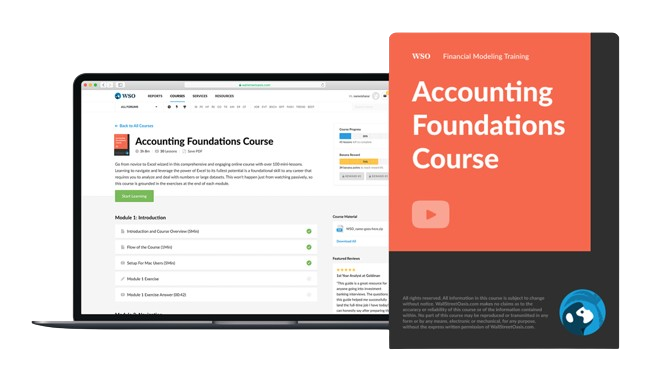Ancillary Revenue
It refers to the revenue through selling products or services that do not come from a part of the company's primary product lines or operations.
What Is Ancillary Revenue?
Ancillary revenue is a term used primarily in the business and finance industries, and it refers to the revenue through selling products or services that do not come from a part of the company's primary product lines or operations.
This type of revenue is supplementary and can help enhance the overall profitability of a business.
For example, a movie theater complex's primary revenue source is selling movie tickets. In this case, the ancillary revenue for a theater would be generated through the sale of food and beverages, which are generally sold at a premium price compared to the product prices in the market.
Every company or even a tiny entrepreneur generates ancillary revenue through different sources. It helps a company to boost the revenue generated through the primary source of income.
However, sometimes, a company's ancillary revenue exceeds the revenue generated through its primary source of income, and the company might have to look into its sales strategies or change its business model altogether.
Thus, too much of it is also not suitable for a company as it might mislead investors about its business models.
Key Takeaways
- Ancillary revenue supplements a company's main income by selling non-core products or services.
- Ancillary revenue boosts profitability and can enhance shareholder wealth.
- Examples of ancillary revenue include selling snacks in theaters or offering cosmetics in convenience stores.
- Ancillary services vary by industry, and increasing revenue involves diversification and transparent pricing.
Understanding Ancillary Revenue
The extra money received (or anticipated to be received) from sources other than the primary source of income for a specific business, organization, financial body, or individual is known as ancillary revenue. For the sale of that product, it qualifies for a tax deduction under applicable tax legislation.
With the possible exception of very small or newly established businesses, almost all businesses produce some kind of supplementary revenue. It is typically used to supplement or increase revenue from sales of the company's main products and services.
But occasionally, a business can discover that its auxiliary revenue exceeds the money it makes from its core products.
In these situations, companies could alter their entire business model or their marketing and sales tactics to make peripheral sales their primary priority.
Schemes, a kind of publicity stunt, are sometimes provided by businesses and turn out to bring in additional money for them. Take an umbrella that isn't covered for winter right before it gets cold.
Therefore, it can increase sales for retailers who offer umbrellas, winter clothing, and other products by providing advertisement space.
The service sector, particularly the hotel and airline industries, is the main source of ancillary revenue. Airlines provide a variety of services, such as seat upgrades, the option to purchase meals during the flight, travel, hotel accommodations, assistance for passengers with impairments, etc.
Examples of Ancillary Revenue
Ancillary revenue can take various forms across different industries. Let's take an example of a carbonated drinks shop. The products primarily offered by the store are different types of drinks. However, it is most likely to sell products such as wafers, chocolates, etc.
It is helpful in the expansion of the revenue generated by the primary product offered by the company.
Let's take a recent example involving 7-Eleven convenience stores. The company's business model is to provide consumers with a wide variety of products that people consume in daily life under one roof for customer convenience.
7-Eleven started producing inexpensive cosmetic products, increasing the company's ancillary revenue. Although it has not been able to grow more significantly than a primary source of income, it is proliferating, thus increasing the ancillary revenue drastically.
The addition of new products in the store constantly would indicate to an analyst that the management is trying to expand its revenue by adding products that consumers would prefer to purchase from a convenience store.
How to Increase Ancillary Revenue?
To enhance ancillary revenue, businesses can employ several strategies:
- Product Line Review: Analyze product lines vertically and horizontally to identify high-value offerings. For instance, a building products firm could offer DIY building project videos or safety wear, augmenting customer utility.
- Additional Services: Introduce extra services that add value for customers. For example, offering training services can enhance labor productivity.
- Outsourcing: If resources are limited, consider outsourcing ancillary services. This allows revenue augmentation without significant investment.
- Charge for Services: Implement charges for ancillary services, like airlines do for telephone bookings and excess baggage. However, transparency is crucial to avoid customer dissatisfaction.
- Maintenance Services: Offer maintenance services to reduce downtime and optimize equipment efficiency, generating additional revenue while enhancing customer satisfaction.
Ancillary Revenue Advantages & Disadvantages
Some of the advantages are:
- Ancillary revenue can act as a way to earn income other than the primary source.
- Materials that are waste for a manufacturer might be helpful for someone else and thus generate revenue.
- It enhances the employment level in the economy.
- By providing ancillary services, the company can also improve its market reputation. The company can build on its reputation by providing ancillary services.
- Creates shareholder wealth by enhancing the company's financial statements.
- Ancillary services can be used to justify higher prices. For example, a hotel can charge higher rentals for its rooms because of the ancillary services not provided by the other hotels. Thus, customers who prefer these services would not hesitate to pay a much higher price.
We can enlist a few of the disadvantages below:
- Sometimes, the customers are suspicious of the prices charged for these ancillary services. Thus it may result in a loss of sales.
- This type of revenue should always be treated as an addition to the primary source as the customers may or may not want such services and thus cannot be guaranteed.
Conclusion
Ancillary revenue, which comes from selling goods or services outside of a company's core activities, is essential for enhancing its main income sources. This extra income has the potential to greatly increase shareholder wealth and profitability.
Diversifying product lines, adding additional services, outsourcing where required, charging for services, and providing maintenance services are some strategies to boost ancillary revenue.
Ancillary revenue has several benefits, such as increased market reputation and income diversification, but it also has drawbacks, like the requirement for openness and customer skepticism.
Ultimately, to preserve sustainable development and investor trust, firms need to carefully balance their auxiliary revenue streams with their major sources of income.
Ancillary Revenue FAQs
The revenue generated by a company through the sale of products or services that do not come from a part of the company’s primary product lines or operations.
Services provided by banks that are not included in the core functioning activities of a bank are ancillary services that lie outside the scope of the traditional banking system.
Customers can be charged for ancillary services provided by the firm like airlines charging for some services to the customers in order to increase their sales.
Free Resources
To continue learning and advancing your career, check out these additional helpful WSO resources:




or Want to Sign up with your social account?